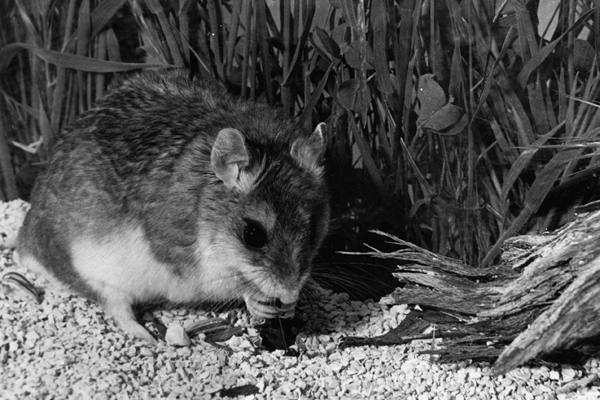The grasshopper mouse, belonging to the genus Onychomys, is a fascinating creature known for its unique behaviors and adaptations. Here’s a detailed overview of its natural history:

Physical Description
- Size: Small rodents, typically around 4 to 5 inches in body length, with an additional 1 to 2 inches of tail.
- Appearance: They have a robust body, short tails, and large ears. Their fur is generally grayish-brown on the back and white on the belly.
Habitat
- Geographic Range: Found in North America, particularly in the arid and semi-arid regions of the western United States and Mexico.
- Preferred Environment: Grasshopper mice inhabit deserts, scrublands, and prairies. They are well-adapted to dry environments and can be found in areas with sparse vegetation.
Behavior
- Nocturnal Lifestyle: These mice are primarily nocturnal, coming out to hunt and forage at night.
- Territoriality: Grasshopper mice are highly territorial and aggressive. They establish and defend territories vigorously.
Diet
- Carnivorous Diet: Unlike many other rodents, grasshopper mice are primarily carnivorous. They feed on insects, other small invertebrates, and even small vertebrates.
- Specialization: They are named for their tendency to prey on grasshoppers, but their diet can also include beetles, scorpions, spiders, and even other mice.
- Hunting: Known for their hunting prowess, they are sometimes called “scorpion mice” due to their ability to hunt and consume scorpions, showing resistance to the venom.
Vocalizations
- Unique Calls: Grasshopper mice are known for their high-pitched, wolf-like howls, which they use to communicate with each other, especially to mark territory.
Reproduction
- Breeding Season: Typically breed from spring through late summer.
- Litter Size: Females give birth to 2 to 6 young after a gestation period of about 30 days.
- Parental Care: The young are weaned after a few weeks and reach maturity at around 2 to 3 months.
Adaptations
- Water Conservation: Adapted to arid environments, grasshopper mice obtain most of their water from the food they eat and have efficient kidneys to conserve water.
- Venom Resistance: They have developed a resistance to the venom of scorpions, allowing them to prey on these arachnids without harm.
Ecological Role
- Predator Control: By preying on insects and other small animals, grasshopper mice help control the populations of these species in their habitats.
- Indicator Species: Their presence and health can be indicators of the ecological balance in their environment.
The grasshopper mouse’s unique dietary habits, vocalizations, and behaviors make it a remarkable example of adaptation to harsh environments, playing a crucial role in the ecosystems they inhabit.